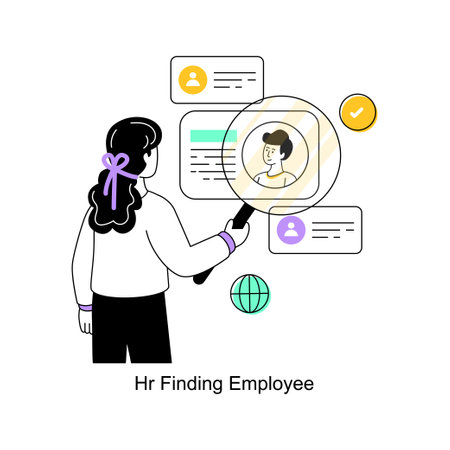Understanding Digital Literacy in the Modern Workplace
Digital literacy has become a must-have skill for everyone in today’s tech-driven workforce. In the United States, businesses of all sizes are using digital tools to stay competitive and efficient. But what does digital literacy really mean, and why is it so important for employees at every level?
What Is Digital Literacy?
At its core, digital literacy means having the knowledge and skills to use technology confidently, safely, and effectively. It goes beyond knowing how to type an email or use a smartphone. Digital literacy covers everything from navigating cloud-based platforms to understanding data privacy and cybersecurity basics.
Key Skills for Digital Literacy
| Skill | Description | Why It Matters |
|---|---|---|
| Basic Computer Skills | Using operating systems, word processors, spreadsheets, and internet browsers | Foundation for almost all office tasks in U.S. organizations |
| Communication Tools | Using email, chat apps (like Slack), video conferencing (Zoom, Teams) | Keeps teams connected across locations and time zones |
| Cybersecurity Awareness | Recognizing phishing attempts, using strong passwords, keeping data safe | Protects company information and prevents costly breaches |
| Cloud Collaboration | Working with tools like Google Workspace or Microsoft 365 | Makes teamwork easier in remote or hybrid environments |
| Problem-Solving with Technology | Troubleshooting basic tech issues and finding digital solutions to challenges | Boosts productivity and reduces downtime on the job |
| Adaptability to New Tools | Learning new software or platforms as they are introduced | Keeps skills relevant as technology evolves quickly in U.S. workplaces |
Why Digital Literacy Matters for Everyone
No matter your job title—from entry-level employee to senior manager—digital literacy is essential. U.S. employers expect staff to handle daily tasks with efficiency and security. Being digitally literate helps you collaborate better, work faster, and adapt to changing technology trends. It also opens up more opportunities for growth within any organization.
2. Key Digital Competencies for Today’s Employees
As technology continues to shape the American workplace, digital literacy is no longer a “nice-to-have”—it’s essential for success in nearly every industry. Whether you’re working from home, collaborating with teams across the country, or navigating new software tools, staying digitally savvy is a must. Here are some of the top tech skills every employee should have today:
Productivity Tools Mastery
Being comfortable with everyday productivity apps is vital. From creating documents in Microsoft Word to managing projects in platforms like Trello or Asana, these tools help keep work organized and efficient. Familiarity with cloud-based solutions such as Google Workspace is also key for seamless collaboration.
| Tool Category | Popular Examples | Why It Matters |
|---|---|---|
| Word Processing & Spreadsheets | Microsoft Office, Google Docs/Sheets | Document creation, data management, calculations |
| Email & Communication | Outlook, Gmail, Slack | Staying connected, sharing updates quickly |
| Project Management | Trello, Asana, Monday.com | Tracking progress, assigning tasks, meeting deadlines |
| Cloud Storage & Collaboration | Google Drive, Dropbox | File sharing and real-time teamwork from anywhere |
Digital Communication Skills
Communicating effectively online is just as important as face-to-face conversations. This includes using video conferencing platforms like Zoom or Teams, writing clear emails, and knowing when to use instant messaging versus formal communication channels.
Cybersecurity Awareness
The rise in remote work and digital transactions means employees must be alert to cyber threats. Knowing how to create strong passwords, spot phishing attempts, and follow company security protocols helps protect both personal and organizational data.
- Avoid clicking suspicious links or attachments.
- Use two-factor authentication whenever possible.
- Regularly update passwords and software.
Adaptability to New Technologies
The digital landscape evolves fast. Being open to learning new software or adapting to updated systems is crucial. Employers value team members who are willing to experiment and stay up-to-date with the latest tools relevant to their role.
Quick Tips for Staying Digitally Literate:
- Take advantage of free online tutorials (YouTube, LinkedIn Learning).
- Attend company training sessions or webinars.
- Ask colleagues for tips on new tools they find helpful.
- Practice using new features regularly to build confidence.
The more comfortable you are with these competencies, the more prepared you’ll be for the demands of today’s tech-driven workforce.

3. Bridging Generational and Accessibility Gaps
Understanding the Challenge
In today’s tech-driven workplaces, employees span a wide range of ages and abilities. Some workers grew up with smartphones in hand, while others remember the days before email. To thrive as a team, everyone needs digital skills—but not everyone starts at the same place. Creating a supportive environment helps all employees feel confident using new technology.
Strategies for Supporting All Employees
1. Offer Flexible Training Options
Everyone learns differently. Providing multiple ways to learn—like in-person workshops, online tutorials, and step-by-step guides—makes it easier for people to find what works best for them.
| Training Format | Best For | Benefits |
|---|---|---|
| In-Person Workshops | Hands-on learners, older generations | Personal interaction, real-time feedback |
| Online Tutorials | Younger workers, self-paced learners | Flexible access, repeatable lessons |
| Step-by-Step Guides | All ages and abilities | Clear instructions, easy reference |
2. Encourage Peer Mentoring and Reverse Mentoring
Create opportunities for employees to learn from each other. More experienced workers can share industry wisdom, while younger colleagues might offer tips on new apps or platforms. This builds teamwork and boosts confidence across generations.
3. Design Accessible Digital Resources
Digital tools should work for everyone, including those with disabilities. Choose software that offers screen readers, adjustable text sizes, and voice commands. Make sure all training materials are accessible so no one is left behind.
Accessibility Features to Look For:
- Screen reader compatibility
- Keyboard navigation support
- Closed captioning for videos
- High-contrast color schemes
- Larger font options
4. Foster an Inclusive Culture Around Technology Adoption
Avoid shaming or singling out anyone who struggles with digital tools. Instead, celebrate small wins and encourage questions. Remind your team that learning is a process, and it’s okay to make mistakes along the way.
The Impact of Bridging These Gaps
When organizations support digital literacy across generations and abilities, everyone benefits. Workers gain confidence, teams collaborate better, and companies are more adaptable to change. Investing in inclusive digital skill-building helps every employee—and the business as a whole—move forward together.
4. Fostering a Culture of Continuous Learning
Why Continuous Learning Matters in a Digital World
In today’s tech-driven workforce, digital literacy is not a one-time achievement—it’s an ongoing journey. As technology evolves, so do the skills needed to succeed. American workplaces thrive on innovation and adaptability, making it essential for organizations to create a culture where employees are encouraged and empowered to learn new digital skills continuously.
Best Practices for Encouraging Ongoing Digital Upskilling
1. Make Learning Accessible and Flexible
Offer digital training through multiple formats—online courses, webinars, lunch-and-learns, and hands-on workshops. Give employees options that fit their schedules and learning styles, so everyone has a fair shot at growing their skills.
2. Recognize and Reward Progress
Celebrate milestones—big or small. Whether it’s earning a new certification or mastering a software tool, public recognition boosts morale and motivates others to keep learning.
3. Tap into Peer Learning and Mentorship
Encourage team members to share knowledge with each other. Pair up tech-savvy staff with those eager to learn. This not only spreads skills but also strengthens workplace relationships.
4. Connect Learning to Real Work Challenges
Help employees see how new digital tools solve real problems. For example, show how data analytics can improve customer service or how collaboration apps make teamwork easier. When people see immediate value, they’re more likely to engage.
Quick Reference: Building a Culture of Digital Upskilling
| Best Practice | How It Works | American Cultural Tie-In |
|---|---|---|
| Accessible Training | Offer flexible online and in-person options | Supports diverse work styles & self-starters |
| Recognition Programs | Acknowledge achievements regularly | Taps into motivation & healthy competition |
| Peer Support | Create mentorship or buddy systems | Cultivates teamwork & community spirit |
| Real-World Application | Tie learning directly to job needs | Aligns with practical problem-solving values |
| Continuous Feedback | Provide regular input & guidance | Keeps growth mindset alive |
Nurturing Innovation and Adaptability Through Learning
The American workforce is known for embracing change and seeking out better ways of doing things. By supporting continuous digital upskilling, companies empower their teams to innovate, adapt quickly to new technologies, and stay ahead in a fast-paced environment.
5. Addressing Challenges and Future Trends
Tackling Roadblocks in Digital Transformation
As U.S. companies race to keep up with rapid technological change, they often hit a few bumps along the way. Some of the most common hurdles include:
| Challenge | Description | Example |
|---|---|---|
| Skills Gap | Employees may lack essential digital skills needed for new tools or systems. | A finance team struggles to switch from spreadsheets to cloud-based accounting software. |
| Resistance to Change | Teams may be hesitant or slow to adopt new technologies. | Long-time employees prefer old processes over digital solutions. |
| Security Concerns | Increased reliance on tech raises worries about data privacy and cyber threats. | A company is cautious about moving sensitive client info to the cloud. |
| Resource Constraints | Not all businesses have the budget for top-tier tech or extensive training. | A small business can’t afford ongoing IT support or new hardware upgrades. |
The Shifting Demands on Tomorrow’s Workforce
The demands for digital literacy are constantly evolving. Here’s how expectations are changing for American workers:
- Lifelong Learning: Employees are expected to regularly upskill as technology evolves—one training session isn’t enough anymore.
- Adaptability: Being able to quickly learn new software or digital processes is becoming just as important as technical know-how.
- Collaboration in Digital Spaces: Teams now work together across time zones using video calls, project management apps, and instant messaging tools.
- Diversity in Tech Roles: Tech skills aren’t just for IT teams anymore; marketing, HR, sales—all departments use digital tools daily.
How Companies Can Stay Ahead
The most successful organizations foster a culture where digital learning is ongoing and accessible. They encourage curiosity, provide hands-on training, and make sure everyone—from new hires to senior leaders—can confidently use the latest digital tools. Investing in employee development not only helps overcome current challenges but also prepares companies for future trends shaping the workforce in America’s tech-driven landscape.


